

 here was once a time when board games were a quiet pastime. Players sat around a board, rolled the dice, moved their markers around, and someone eventually won. It was all very civilized. Well, that all changed as the skill-and-action game was born.
here was once a time when board games were a quiet pastime. Players sat around a board, rolled the dice, moved their markers around, and someone eventually won. It was all very civilized. Well, that all changed as the skill-and-action game was born.
While the classic board games never went away, it was the introduction of Mouse Trap in 1963 that kicked games into high gear. Suddenly, games were no longer placid, sit-around-a-table-and-play-nice affairs; now there was movement, activity, and tons and tons of noise. Games became boisterous and sometimes even frenetic. Much laughter—and more than a little bit of heckling—ensued. (My brothers and I were especially adept at turning any game into a contact sport—even the relatively sedentary classics Monopoly, Sorry!, and Risk.)
One of the things that set these games apart was how TV-friendly they were, and indeed TV commercials played a huge role in the proliferation of these explosive games. With the rise of television, marketers could show all the loud, chaotic fun of a game in progress. (One notable similarity of these commercials was that the games usually ended with Dad on the losing end. Hey, what kid wouldn’t want to challenge and best good old Dad, even if it was only in a game?)
Prolific inventor Marvin Glass was behind several of these games—many of which are still made today. The game category would be reinvented again with the introduction of role-playing games that created entire subcultures of fans—think Dungeons and Dragons—in the mid-1970s.
What’s always set the most popular games apart has been that there really is no other comparable play experience, and that’s why they endure. The best of them are both easy to learn and different every time they’re played, which is why so many of them have endured into the digital age.
Today, perhaps as a response to all the digital entertainment, skill and action games are experiencing a resurgence, with the classics attracting a new generation of kids, and inventors once again coming up with new ways to make lots of noise—and fun—with board games. While life may never be quite the same as it was in the days before Atari and Nintendo gaming systems, board games are still an exceptional social experience, and adults who remember when their families could spend hours playing Operation or Ker-Plunk or Twister or Mystery Date are only too happy to keep playing.
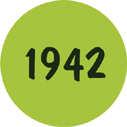
![]() n the post–World War II years, street hockey became a neighborhood fixture in cities and in the growing suburbs. But not every day was one for playing outside. Enter Carrom with Nok Hockey, a tabletop version of the outdoor street game.
n the post–World War II years, street hockey became a neighborhood fixture in cities and in the growing suburbs. But not every day was one for playing outside. Enter Carrom with Nok Hockey, a tabletop version of the outdoor street game.
It was a simple toy: a box with a particleboard bottom, two plastic sticks, and a couple of wooden discs, and this simplicity was part of its appeal. The ingenious design innovation was nothing more than two diamond-shaped blocks of wood guarding the goals, which were slots at the narrow ends of the game’s Goal Zones that let the discs shoot out of the box.
Like its outdoor counterpart, the fun of this game was the controlled mayhem. Oh, and noise. Whether it was the kids shouting and cheering or the slamming of the sticks against the wood, this was not quiet play.
Plus, there were no rules. Well, there were some instructions, but Carrom more or less left everything up to the kids, who were only too eager to create “house rules.” Over the years, there was some standardization of the play, but nothing has ever been “official.” This game wasn’t about rules. It was all about the action.
Nok Hockey was the inspiration and precursor to air hockey and electronic hockey games, but today you can buy a Nok Hockey set virtually identical to the one first made more than sixty years ago. The longevity of this simple game is a testament to the fact that the play is almost always more important than the toy itself.
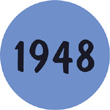
![]() t’s a playground taunt as old as playgrounds themselves: “You’ve got cooties!” How many generations of kids have shrieked those fateful words, pretending to give themselves cootie shots while running away from the playground outcast rumored to be afflicted?
t’s a playground taunt as old as playgrounds themselves: “You’ve got cooties!” How many generations of kids have shrieked those fateful words, pretending to give themselves cootie shots while running away from the playground outcast rumored to be afflicted?
So it was perhaps only a matter of time before that became a game, created by Herb Schaper as early as 1948. A simple, luck-based racing game, it didn’t have a game board (which was rare for games at the time). The single objective was to be the first to assemble one’s adorable, plastic Cootie Bug by rolling a die to determine what part went on next.
At first, Schaper could barely give away this weird boardless game, so he convinced the local Dayton’s department store to sell it on consignment. But like any playground bug, it soon caught on, and by the early 1950s, the game had become a staple in many homes and preschools, and remained so for decades.
Kids who remember playing the game may also recall how much fun it was to do the “Cootie Dance”—which involved jumping around screaming and scratching as if you had contracted actual cooties yourself.
The game is still being made and sold, and kids continue to threaten cootie infestations on playgrounds everywhere.

![]() t wasn’t a better mousetrap that Milton Glass set out to build in 1963, it was a better board game. Sure, Monopoly, Clue, Sorry!, and other classics were all big hits, but the iconoclastic game designer couldn’t help but wonder what would happen if he combined toylike elements with a board game. His inspirations were the kooky Rube Goldberg contraptions featured in the Inventions cartoons that had been appearing regularly in newspapers since 1914. So ubiquitous were these cartoons, in fact, that by the early 1960s, “Rube Goldberg” had entered the American lexicon as a way of describing anything that used maximum effort to achieve minimal results. What could be better inspiration for a board-game-meets-toy?
t wasn’t a better mousetrap that Milton Glass set out to build in 1963, it was a better board game. Sure, Monopoly, Clue, Sorry!, and other classics were all big hits, but the iconoclastic game designer couldn’t help but wonder what would happen if he combined toylike elements with a board game. His inspirations were the kooky Rube Goldberg contraptions featured in the Inventions cartoons that had been appearing regularly in newspapers since 1914. So ubiquitous were these cartoons, in fact, that by the early 1960s, “Rube Goldberg” had entered the American lexicon as a way of describing anything that used maximum effort to achieve minimal results. What could be better inspiration for a board-game-meets-toy?
The ultimate goal of the game was to keep your mouse out of the trap, but the fun was in building a mousetrap that worked. Players took turns adding pieces to the contraption as they moved their mice playing pieces around the board. When the trap was finally built, you didn’t want to land on the “Cheese” space when another player landed on the “Turn Crank” space, for that was his or her opportunity to set the machine going. Balls would roll, hands would swing, levers would be pushed, and if all went according to plan, a basket would drop, trapping your mouse, and you would be out of the game.
But like any true Rube Goldberg device, effective operation wasn’t always guaranteed. Half the fun of the game was that even when built correctly, the contraption could misfire—and the game would continue. Eventually, there would be one player left who had avoided the trap, and he or she would be declared the winner.
What made this game so appealing was its silliness and the unpredictability. But the advertising didn’t hurt, either; the zany TV commercials depicting the action of the game, combined with the popularity of the Rube Goldberg cartoons, made this one of the bestselling games of the year.
The success of Mouse Trap signaled the beginning of the golden age of skill-and-action games, inspiring such favorites as Crazy Clock, Booby Trap, Dynamite Shack, Time Bomb, Battling Tops, Tip It, Toss Across, Fascination, and many more. Whether the game involved racing the clock, balancing disks on a swinging tower, or throwing beanbags against a board, the fun was always in the controlled chaos.
Of all the skill-and-action games it inspired, Mouse Trap has arguably had the greatest staying power. It’s still made today. Like classic comedy, the silly game play and the unpredictable outcomes are the kinds of things people never get tired of. And really, who can look at this crazy contraption and not get a good laugh?

 he toy industry has always worked on the premise that if something is good, more of it is better. That pretty much mimics a seven-year-old’s perception of the world, too, and sometimes it pays off. The toy business also demands new stuff every year. Particularly in the 1960s, having that new item to put on TV was important to keep up with the competition.
he toy industry has always worked on the premise that if something is good, more of it is better. That pretty much mimics a seven-year-old’s perception of the world, too, and sometimes it pays off. The toy business also demands new stuff every year. Particularly in the 1960s, having that new item to put on TV was important to keep up with the competition.
Given the tremendous success of Mouse Trap, Ideal went back to Marvin Glass for another Rube Goldberg-type game, and the result was Crazy Clock. Perhaps inspired by Goldberg’s drawing “A Simple Alarm Clock,” Glass set out to create a contraption that when assembled would eject a little plastic sleeping man from his bed.
For this game, Glass got rid of the game board and used cards to take players through the process of building the contraption. If all went according to plan, when the clock was built, and a player got to wind it, a broom would knock a ball down some stairs that would set some feet running down the track that would kick a golf ball that ran down a chute to hit a man that activated a bird and dropped an egg out of a nest onto a tilting pool table that made a candle swing and woke up your sleeper.
Like Mouse Trap, the mechanics didn’t work every time, and that added tension to the game, because if the machine was a dud, the chance to wind the clock would pass to the next player.
The commercial did a great job of selling kids on the game—the same kids who had clamored for Mouse Trap the year before—but in actual play the game was disappointing. The mechanism was so undependable that many kids got frustrated and stopped playing. In the mid-1960s, parents didn’t automatically return something that didn’t work as expected, so Ideal did pretty well with the game. But it only really lasted one year.
Ideal did one more Rube Goldberg–inspired game called Fish Bait in 1965, but by that time the trend and the interest had passed. (It also didn’t work all that well.) Ideal introduced Tip It the same year, and that one became a classic.
Cardinal tried to reissue the game in 2000 under the name Wake Up Sam, presumably to compete with the 1992 Parker Brothers game Don’t Wake Daddy that had become a consistent seller, but it didn’t take off. Cardinal presumably had acquired the molds and the rights to the game after the breakup of CBS Toys (which had purchased Ideal in 1982) in 1986.
Crazy Clock remains merely a memory for those who played with it. There are some older versions around as collectibles, but those mostly don’t work. The springs and other pieces of the mechanism invariably got lost, so it would be rare to find a fully functional Crazy Clock game today.
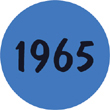
 ne of the earliest glow-in-the-dark toys was called Fireball, a ball that had glow-in-the-dark liquid—made out of the compound zinc sulfide—inside. After charging it up in the light, kids swirled the liquid to coat the inside of the ball—thus enabling them to play catch in the dark.
ne of the earliest glow-in-the-dark toys was called Fireball, a ball that had glow-in-the-dark liquid—made out of the compound zinc sulfide—inside. After charging it up in the light, kids swirled the liquid to coat the inside of the ball—thus enabling them to play catch in the dark.
By the mid-1960s, manufacturers had figured out how to mold the chemical into plastic to achieve this effect. The glowing Frisbee soon followed, and in 1965, Transogram introduced the first glow-in-the dark board game, Green Ghost.
Designed to be played in the dark, the plastic game board was elevated on six legs, so no table or surface was needed (one less thing to bump into). Before play, the board and all the glowing elements had to be “charged.” That is, they had to have strong light shone on them so they would glow when the lights were turned out.
The board, not surprisingly, depicted a graveyard, and each player was one of the Green Ghost’s pets, sent to travel around the board and retrieve twelve little ghosts (all named after shades of green) locked in the three crypts. The object of the game was to be the player who found Kelly Green as they searched for him (or her) in the crypts. Players had to avoid bones, bat feathers, and snakes, and the game board had holes in it that your piece could “disappear” down and come up through another hole in the board. It was an ingenious variation on the standard chase game, and since you were in the dark, it played on touch rather than seeing and counting. When all the little ghosts had been collected, they were placed in the base of the spinner. The Green Ghost was given one more turn, and the ghost he ended up pointing at was determined to be Kelly, and the player who found it was the winner. Basically, the winner was determined by a random spin, which are lousy game mechanics, but kids didn’t mind so much—the fun was in playing in the dark.
The main problem with the game was that its glow—along with its novelty—would wear off if the play went on too long, so it had to constantly be recharged. It was also not really all that much fun to play before dark.
Still, today Green Ghost has a small following of fans, and even a Facebook page. There have been efforts to revitalize the title since 2009, but to date that hasn’t happened.
No other complete glow-in-the-dark board games have been introduced since.

 pen the door for your … mystery date.”
pen the door for your … mystery date.”
That enticing offer was the gimmick behind this board game, designed by the prolific Marvin Glass for Milton Bradley. Mystery Date was targeted to girls ages six to fourteen, and play involved moving around the game board and collecting cards that pictured items of clothing the players might imagine wearing on their date. A full outfit took three cards, and players would keep drawing until satisfied they had the perfectly coordinated outfit.
Then came the moment of truth: When the player landed on the “Open Door” space, she would gingerly open the plastic front door in the middle of the board, revealing whether her date was a “dream” or a “dud.” A dream date might be an athletic stud proposing a trip to the beach, or a well-groomed gent bearing a corsage and an invitation to a formal. The “dud,” on the other hand, arrived looking sloppy and unshaven with no specific plans.
The game was right on trend. From The Many Loves of Dobie Gillis to The Patty Duke Show, the most popular TV shows of the time featured teens and their dating adventures. However, for girls who were too young to date but couldn’t wait to be teenagers with legions of male suitors (or so they imagined), the game was a perfect way to play out that fantasy.
The appeal of the game long outlasted the 1960s; it was reissued in 1970, and again in 1995 and 2005. With each new version, the outfits and the dates both got a makeover to reflect more contemporary sensibilities.
Various versions of Mystery Date are still available, and the small game company Winning Moves sells a replica of the original. Women who remember playing with the original all say versions of the same thing: Even the guys considered duds in 1965 look better than a lot of the kids trying to date their daughters today. (Yeah, you did become your mother.)
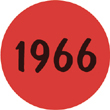
![]() t was the phenomenon that almost wasn’t.
t was the phenomenon that almost wasn’t.
It’s hard to imagine, but as popular as Twister is, it was just one day—and one lucky break—away from being an also-ran. On the eve of its release, May 3, 1966, Milton Bradley got the news that Sears was canceling its order for the edgy new game, saying it wasn’t appropriate for kids. Evidently, the folks in Milton Bradley’s PR department didn’t get the news in time. That night they took Twister to The Tonight Show Starring Johnny Carson, and Carson played it on air with Eva Gabor. Would there ever be a more hilarious way to debut a wacky new game?
According to Milton Bradley, the next morning there was a line about fifty people deep in front of Abercrombie and Fitch in New York clamoring for the game. The word was out, and before long, stores—Sears included—were tying themselves in knots trying to restock the shelves fast enough. Twister had found its audience, but it wasn’t little kids. Teens and adults drove the game’s initial success, though kids were soon to follow.
Twister couldn’t have been more perfect for the “swinging ’60s.” While there was nothing inherently sexual about the game, it reflected people’s growing comfort with their bodies, sexual freedom, and the idea that it was perfectly fine for men and women to be tangled up together on a plastic sheet. It was a fun and innocent way for adults to be physically close, and it tapped in perfectly to the spirit of the times.
The game continues to be popular, and although the original players may feel too stiff and inflexible to engage in the game, today’s kids and young adults love it.
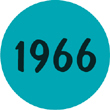
 ry this phrase on virtually any baby boomer: “My block is knocked off!” Immediately you’ll conjure up memories of one of the most famous commercials of the mid-1960s. Those old enough to have seen it will fondly remember the thrill of watching Junior handily dispatch Dad as the Red Rocker squared off against the Blue Bomber in a large plastic boxing ring. (I could write an entire treatise on why Dad was always a doofus in the game commercials of this period, but never mind for now.)
ry this phrase on virtually any baby boomer: “My block is knocked off!” Immediately you’ll conjure up memories of one of the most famous commercials of the mid-1960s. Those old enough to have seen it will fondly remember the thrill of watching Junior handily dispatch Dad as the Red Rocker squared off against the Blue Bomber in a large plastic boxing ring. (I could write an entire treatise on why Dad was always a doofus in the game commercials of this period, but never mind for now.)
Was there ever a more hilarious way for boys to channel their inherent aggression than battle by plastic robot? And parents liked it, too, because no one actually got hurt; it was, in other words, an acceptable way for kids to brawl.
This was not a sophisticated or precise toy. Handles on the sides controlled how the robots moved around the ring (though that movement was fairly limited) and buttons on the handles let the punches fly. When one robot landed a punch on the other, its head would shoot up and the round would end. It was all kinds of clumsy, but that was part of its charm—that and the unmistakable clash and clatter of the plastic. Sure, there was a modicum of skill involved, but part of the appeal, and what kept kids at it for hours, was that there was enough luck involved that the skill wasn’t always the determining factor in winning. It was controlled mayhem, and kids loved it.
The original toy by Marx was produced into the early 1970s. In 1977, Marx tried to tap into the success of Star Wars and created the Clash of the Cosmic Robots, using that age-old trick: tweak the design and change the colors and—presto!—a new toy is born. However, Clash never really stood a chance in the competitive toy arena of the late 1970s.
Mattel later acquired the rights to the toy, and, inspired by the original robots’ brief appearance in Toy Story 2, introduced a replica of the original intended for the collector’s market in 2000.
A version of the toy is still available, though it’s about half the size of the original.
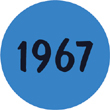
 hile most games of the 1960s were marketed to little kids, the manufacturers of Careful took a different tack, promoting it as a party game for the new hip generation of teens and adults (a marketing strategy that naturally made it irresistible to younger kids as well).
hile most games of the 1960s were marketed to little kids, the manufacturers of Careful took a different tack, promoting it as a party game for the new hip generation of teens and adults (a marketing strategy that naturally made it irresistible to younger kids as well).
Careful made a whole lot of noise and a whole lot of mess. Play centered around a tower that stood almost four feet tall, with four floors built on pillars of red, green, blue, and orange plastic. The object of the game was to remove the pillars without making the tower collapse, which made setting it up almost as strategic and challenging as the game play. Oh, and there was a bell tower on the top that jingled when the tower was at risk of collapsing—which happened pretty often as the game progressed.
On each turn a player would spin the spinner to see which color pillar he or she had to remove. Then came the tricky part: how. You could try to slide the pillar along the maze on each floor level. Or you could try to push it to the middle of a floor and remove it through the hole in the center. Or, if you were really confident, you could lift one floor and pull out the pillar. A truly strategic player might try to rearrange the pillars with each turn to increase his chances of getting his out on the subsequent turn—and perhaps making it more challenging for the next player.
Naturally, this was all to be done amid taunting and heckling from the other players—which would generally reach its zenith when the tower inevitably crashed to the floor. It was certainly one of the largest and loudest games of the period—and often one of the longest; even though the rules suggested that you play as many rounds as you had players, the game often lasted well into the night as tower topplers clamored for one more chance to redeem themselves.
Careful was only a modest hit, and once the popularity of party games dwindled in the early 1970s, it took a final tumble into obscurity.
But while Careful’s sheer size has made it prohibitive to reissue from a cost standpoint, its legacy lives on in Hasbro’s Jenga. Jenga’s tower may stand only about eighteen inches tall, but the challenge—and the fun—is just as large.

 his was a skill-and-action game that required plenty of hand-eye coordination, and skills similar to those required for thumb-wrestling or Slaps (one name for the game where you put your two hands on top of your opponent’s and try to move them out of the way before you can be slapped).
his was a skill-and-action game that required plenty of hand-eye coordination, and skills similar to those required for thumb-wrestling or Slaps (one name for the game where you put your two hands on top of your opponent’s and try to move them out of the way before you can be slapped).
The game was animated by the plastic Slam-O-Matic, a unit that sat in the middle of the table. It had four levers shaped like hands, and each one was connected to a tab in the center. It was essentially a scoring device. When a hand was slapped, its tab descended, so the tab of the last person to slap was plainly and shamefully visible on the top. The idea was not to be the last to slap.
Players were each dealt cards, and took turns drawing from their stacks. If you got a match, you slapped in, and the last person to go Hands Down had to give up a card to the first one. Play continued until one player was out of cards.
Now here was the thing, though: On your turn you could pretend to go Hands Down even if you didn’t have a match. Then, the first person to fall for your sleight of hand would have to give up a card, and you might get a match.
It was definitely a fast-paced and noisy game, and fun for groups or parties since you needed at least three people to play.
This was really a basic card game, but the Slam-O-Matic (got to love saying that) added novelty and fun. With its aqua base and funky design it also truly reflected the style sensibilities of its time.
Poof-Slinky, which currently owns the Ideal brand name, has produced a modern version of the game called Slap Happy. Game play is the same—Slam-O-Matic and all—so new generations can enjoy this classic.
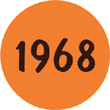
 s the onomatopoeic name suggests, the thrill of this game was the moment when all the marbles came crashing down, making that dreaded, but all too familiar, ker-plunking sound.
s the onomatopoeic name suggests, the thrill of this game was the moment when all the marbles came crashing down, making that dreaded, but all too familiar, ker-plunking sound.
Setup was a little tedious. Players threaded long plastic sticks through an octagonal collar around the center of a tube. When all the sticks were in place, marbles were poured into the top of the tube and landed on the crossed sticks, where they precariously balanced. That’s when the fun began. On each turn, players removed one stick, and as the number of sticks diminished, the chances of marbles dropping through increased.
Inevitably, one player would pull a stick that would create a cascade of marbles—ker-plunk!—ending the round.
Players often created their own rules to make the game a little more exciting. The one universal rule, though, was that once you touched a stick, you had to remove it.
The game seemed like it had elements of strategy to it, but for the most part, it was really about luck, because as the game progressed, each straw could change the entire setup.
This play pattern—where one wrong move sends everything crashing down—has been part of many different games. Kids love the noise and the mayhem, and moms always liked that the mess was confined to a small space.
Another cool thing about Ker-Plunk was that you could use any marbles, so you could easily replace the ones that inevitably rolled under couches.
In a testament to the game’s timeless appeal, Mattel is still making and selling a version that is slightly smaller than the original.
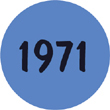
 ne of the reasons that people keep trying to come up with new toys and games is the chance that they’ll hit the jackpot. Sure, many—nay, most—fail, but every once in a while a major hit is created. That’s what happened with Uno. Developed in 1971 by Merle Robbins, a Cincinnati barber, the game was a variation on many types of basic card games. The object was to get rid of all your cards by playing them one at a time on a card with a matching color or number on the top of the discard pile. Simple? Not so fast.
ne of the reasons that people keep trying to come up with new toys and games is the chance that they’ll hit the jackpot. Sure, many—nay, most—fail, but every once in a while a major hit is created. That’s what happened with Uno. Developed in 1971 by Merle Robbins, a Cincinnati barber, the game was a variation on many types of basic card games. The object was to get rid of all your cards by playing them one at a time on a card with a matching color or number on the top of the discard pile. Simple? Not so fast.
Robbins put in a lot of twists and turns that kept the game constantly changing, including wild cards, cards that reversed the direction of play, and rules that forced someone on the verge of winning to fill up their hand again. And there’s another important rule: When a player has only two cards left and is about to play one, he or she must say “Uno” to warn all the other players that the round is about to end. If the player is caught not saying it, he or she has to draw two cards … and the hand goes on.
The game is played with a deck of 108 cards—25 cards in four suits with the numbers 0–9. There are also 8 cards that change up the game play. Each player starts with 7 cards, and on each turn must either play or draw.
Part of the appeal of the game was its simplicity. Even with the relatively complex reverses and change-ups that occurred, virtually everything is printed on the cards, so people can just sit down and start playing—an important component of a hit game.
Robbins scraped together $8,000 to produce the first five thousand games and sold them out of his barbershop and other local stores. It was a decent business, but Robbins had never set out to be in the game industry, so in 1972, he sold the rights to the game for $50,000 plus a royalty of 10 cents per game to the newly formed International Games.
As had happened with other games and would with ones in the future (notably Pictionary, in the mid-1980s), grassroots success blossomed into a full-scale hit. With the broader distribution made possible by International Games, more and more people started to play Uno, and it became a minifad by the mid-1970s.
Mattel acquired International Games in 1992, and Uno has become one of the bestselling games of all time.
Since it’s been under the Mattel Games banner, Uno has been produced in hundreds of different versions with themed sets ranging from entertainment to sports. Mattel has introduced a variety of mechanical devices to enhance game play as well. The game is a bestselling app and a hot computer game, and the annual Uno World Championship in London and Moscow attracts representatives from more than seventy countries.

 hroughout toy history, the number of toys that have truly transformed the nature of play is relatively few, but Dungeons and Dragons (D&D) is certainly one of them. It introduced an entirely new way to play, drawing new types of players into the world of games and creating an entire subculture surrounding a game.
hroughout toy history, the number of toys that have truly transformed the nature of play is relatively few, but Dungeons and Dragons (D&D) is certainly one of them. It introduced an entirely new way to play, drawing new types of players into the world of games and creating an entire subculture surrounding a game.
There had been complex war games before, most of which were sold largely to the military hobbyist audience, but D&D changed the rules entirely. D&D was a role-playing game, which meant that instead of mobilizing an army, players actually took on the role of individual characters that they played throughout an adventure. Each game was one story or adventure, and depending on the players, the narratives could get very complex. Each of the players would travel through the world of the story gaining skills, strength, and experience, and engaging in battles, the outcomes of which were determined by the rolls of different dice. Adventures could take hours, days, or even weeks to complete, and the game soon amassed a cultlike following across the United States—and the world—particularly in the nerd and geek subcultures, where fantasy worlds had become a refuge from real-life jocks and bullies.
Each game was overseen by a dungeon master, who dictated the story line and guided the play. Serious dungeon masters would devote hours to developing different adventures, often tailored to the interests of the players. As the game caught on, a secondary market grew around game books, props, and accessories. It wasn’t uncommon for kids to dress up as their characters while gaming, and costumed D&D players soon became the centerpiece of gaming conventions such as Gen Con.
The original game had few parameters, but over the years a more rules-driven game, Advanced Dungeons and Dragons, developed, and the scope of the game kept expanding. Naturally, there were some copycat games, but none would come close to finding such a devoted audience as the original D&D until Magic: The Gathering was introduced in 1993.
D&D was not free of controversy in its heyday. As the game worked its way into popular culture, it became a target of attacks from religious groups, who likened the game play to Satanism. Soon, urban legends grew up around players who were said to be so distraught over losing they committed suicide. No reported instances of this can actually be found, though it is fair to say that a fair number of D&D players bordered on the obsessed.
D&D continues to be a complete culture among its legions of fans. From events and conventions to new products—both traditional and electronic—the world of D&D is still vibrant, engaged, and nerdy as ever. But in a really good way.

 lthough Othello as we know it today was first marketed in the United States in 1975, the game has a long history stretching back to the Victorian era, and it has influenced many similar games, including Reversi, Go, Over-She-Goes, Annex, and others.
lthough Othello as we know it today was first marketed in the United States in 1975, the game has a long history stretching back to the Victorian era, and it has influenced many similar games, including Reversi, Go, Over-She-Goes, Annex, and others.
Despite the game’s roots in the British Empire, it was the Japanese company Tsukuda Original that branded the game with the name Othello. They also created a complex backstory about how the black and white sides of the pieces used in the game represented Shakespeare’s Othello and Desdemona, and the green playing board represented the jealousy (Shakespeare’s “green-eyed monster”) that propelled the plot of the play.
But it wasn’t Elizabethan allusions that made the game a hit. It was the fact that it was a simple strategy game that had so many possible variations that no two games were ever quite alike. Starting with four checkers in the board, players added a checker with each turn, and if you flanked pieces of the other color, you reversed all of them to your own color. The player with the most of his color once the board filled up was the winner.
The modern version of the game was first introduced in Japan in 1973, and it made its way to American shores when a fan of the game named Jim Becker secured the rights to sell the game in the United States, then licensed them to Gabriel Toys. The game was marketed under a catchy phrase: “A minute to learn. A lifetime to master.”
In 1976, Becker arranged the first Othello tournaments, and they’ve been an annual event ever since, though the winners are not likely to make the evening news as they did in the early 1980s.
With the rise of electronic games and home computers, it’s no surprise that many enterprising minds have attempted to computerize the game. The first computer Othello, produced in the early 1980s, was a handheld set the size of a shoebox, and it cost about $100—a staggering sum at the time. Later on, Radica created a handheld version that cost about one-tenth of the original computer version, and it became a small, but dependable, seller.
Othello is still popular worldwide, particularly in Japan, which has produced quite a number of Othello champions. Becker’s company reports that more than forty million classic games have been sold in more than one hundred countries.
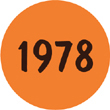
 ne of the best things about classic skill-and-action games is the noise, noise, noise, noise. And Hungry Hungry Hippos delivered on that, and then some. From the first time they set eyes on the marble-eating hippos, kids were hooked on the fast-paced feeding frenzy and the unmistakable clatter of plastic on plastic that is the classic sound track for games of this type.
ne of the best things about classic skill-and-action games is the noise, noise, noise, noise. And Hungry Hungry Hippos delivered on that, and then some. From the first time they set eyes on the marble-eating hippos, kids were hooked on the fast-paced feeding frenzy and the unmistakable clatter of plastic on plastic that is the classic sound track for games of this type.
The game was first created by inventor Fred Kroll in 1967, near the peak of the first frenzy for this type of skill-and-action game that was kicked off by Mouse Trap in 1963. For reasons now lost to history, the game didn’t make its debut until more than a decade later when it was first produced by Milton Bradley.
Four colorful plastic hippos were attached to the four edges of a game board. A bunch of marbles were released into the center of the board, and then players whacked away on the handles of the hippos, which would stretch their necks so they could gobble up the marbles. The winner was the one who got the most marbles.
But despite what looked like chaos, smart kids knew that there was a strategy to this game; you couldn’t just whale away at the levers and hope to win, because when a hippo missed a ball, it could ricochet right into an opponent’s mouth. The name of the game was actually controlled whacking. Really smart kids also knew to whack differently depending on the number of kids playing because the number of players affected how the marbles would move.
Despite the game’s distinctively retro, ’70s feel, each new generation of kids has found Hungry Hungry Hippos to be irresistible, and it has never been out of production (though there have been some updates over the years: The marbles are now red instead of white, and some of the hippos have changed colors). There have also been an arcade version and even a travel version that kept all the marbles enclosed in a clear plastic bubble. (Yeah, that’s perfect for a long car trip.)
This game may have been loud, boisterous, and annoying to some grown-ups (killjoys), but it was all part of the excitement and silly play that make classic games so popular.

 ouldn’t it be great if the last argument you had with a friend ended up making you both multimillionaires?
ouldn’t it be great if the last argument you had with a friend ended up making you both multimillionaires?
Well, that’s exactly what happened to Scott Abbott, a sports editor with the Canadian Press, and Chris Haney, photo editor of the Montreal Gazette. It started as an argument over who was the better board game player, which turned into a contest to see who had a better grasp of trivial information.
What happened next, though, was anything but trivial. They turned their contest into a board game. At the time, it seemed unlikely that this homespun creation would ever take off. Because its innovative folding board and plastic game pieces (round containers that held six different colored pie-shaped wedges to keep track of correct answers) were expensive to produce, they priced the game at $35, which was astronomical for a game at the time. And as if that wasn’t bad enough, the now notoriously difficult trivia questions were clearly aimed toward adults, and conventional wisdom at the time was that adults didn’t play board games. Plus, retailers would never take a square-shaped box that didn’t fit into their standard shelf configurations. It was hopeless.
Hopeless at least until people started playing it. For this, Abbott and Haney can thank Linda Pezzano, an innovative marketer with a flair for the nontraditional who they brought in to try to sell adults on a game that tested their knowledge of often-arcane information. Pezzano sent games to every celebrity mentioned in the game, hosted parties for the media at her house, and gave away sample game cards to just about anyone who would look at them. The tactics worked. Over the next year, this tsunami of publicity made Trivial Pursuit a must-have item in millions of households. At a time when game manufacturers considered selling one hundred thousand units of a game to be a success, Trivial Pursuit was selling millions. In fact, between 1983 and 1985, more than thirty million sets were produced. Its popularity attracted lawsuits, saying Abbott and Haney had stolen the questions or the very idea of the game, but the courts consistently ruled in favor of the creators.
The debut of Trivial Pursuit was a game-changing event. Thanks to Pezzano’s smart PR efforts, adults across the country were suddenly throwing parties just as an excuse to play the game, introducing the tradition of “game night”—something that hadn’t previously existed—that would become a fixture of adult social life for the next thirty-plus years.
Not surprisingly, the success of Trivial Pursuit ushered in a boom in trivia games: everything from Bible trivia to music trivia to sports trivia and virtually any other topic you could think of. None of the spin-offs had the longevity of Trivial Pursuit, which by then had emerged as a bona fide brand; by the twentieth anniversary of the game, Milton Bradley estimated that it had sold more than seventy million copies in seventeen countries and twenty-six languages.
Today, Hasbro makes about fifteen different versions of the game—including collector’s editions and specialized editions, including a sports edition and a book lover’s edition—most of which are updated every few years to stay current. The game has had online versions, been on TV, and even inspired a Vegas slot machine. Jackpot, indeed.
Not a bad way to settle a score between friends, is it?